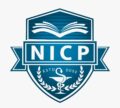Infrastructure
Learning Environment
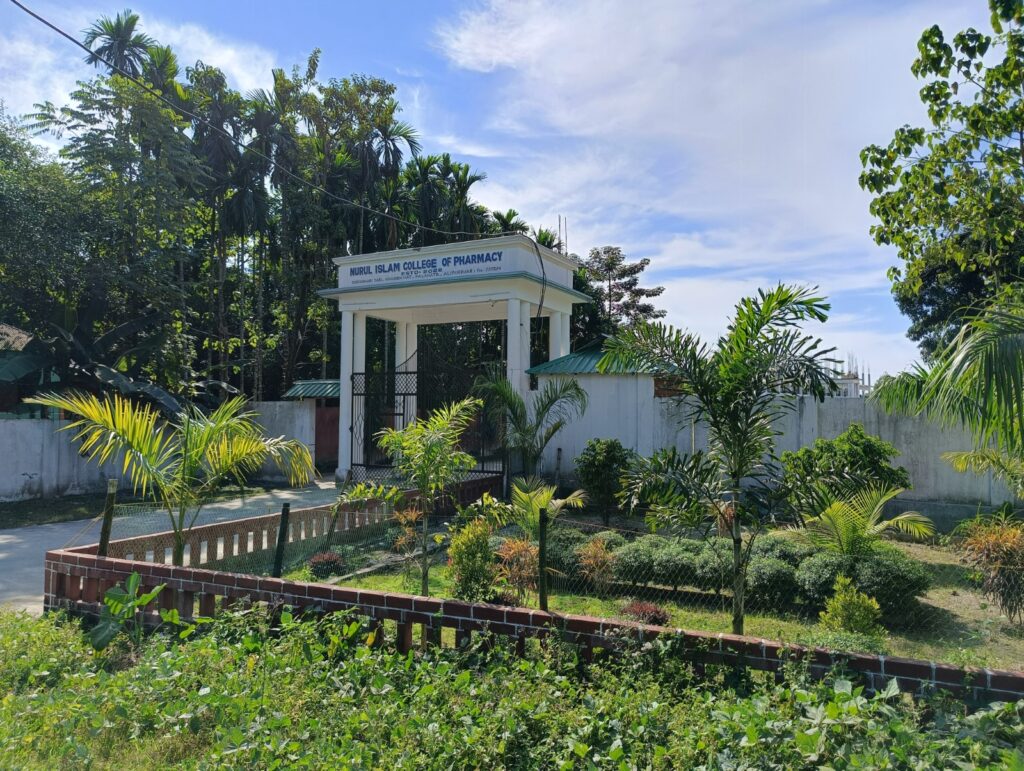
In order to develop all around personality of Students and avail them with the best learning atmosphere we at Nurul Islam College Of Pharmacy(NICP) are commited to house the best of art labs, workshops IT center & whatever be the need. Not to mention that we do understand that along with academia sports, extra curricular activites and proper presentation skills are a must to make the students reasy for the Industry and the Real-World and for the same pay extra heed to these areas of development.
A glimpse of college & life at it:
LABORATORIES
Pharmaceutics Lab:
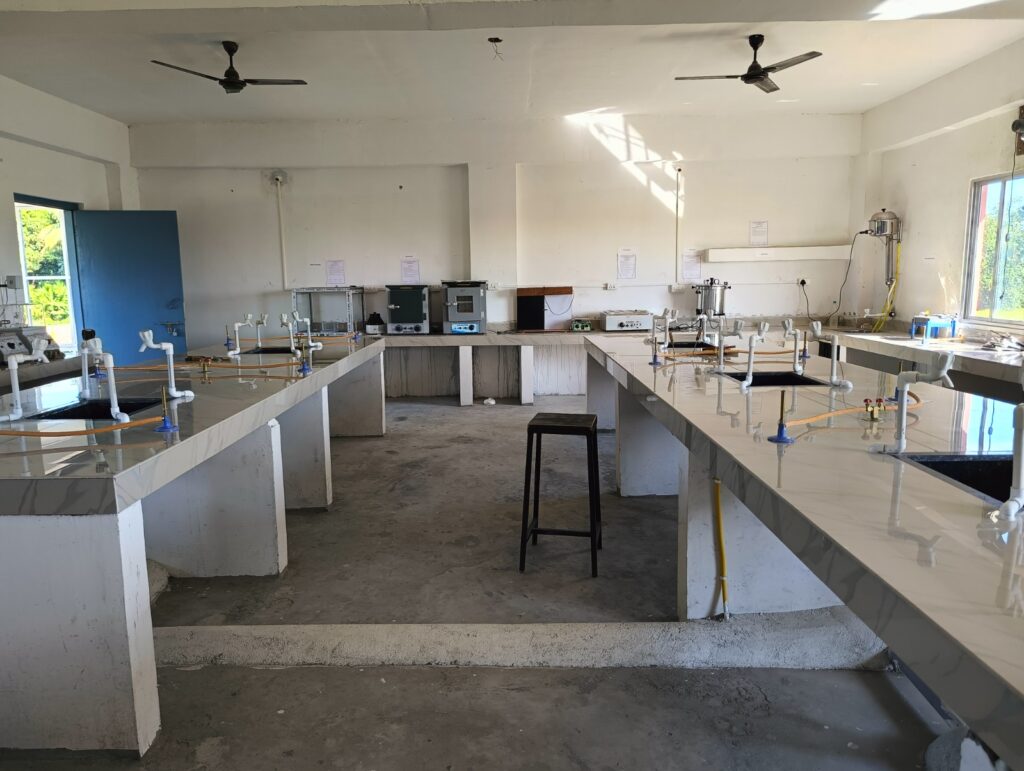
The pharmaceutics lab is a crucial component of a pharmacy college where students receive hands-on training in the formulation, preparation, and testing of pharmaceutical dosage forms. This lab provides students with practical experience in turning pharmaceutical concepts into tangible products that can be used in patient care.
Here’s more about what a pharmaceutics lab typically entails:
Purpose and Objectives:
The primary objective of the pharmaceutics lab is to bridge the gap between theoretical knowledge and practical application. Students learn to apply their understanding of pharmaceutical sciences to create various dosage forms that are safe, effective, and appropriate for patient use.
Key Activities and Experiments:
- 1. Compounding: Students learn to prepare different pharmaceutical dosage forms such as tablets, capsules, liquids, creams, ointments, and more. They work with various raw materials, equipment, and techniques involved in formulation development.
- 2. Dosage Form Evaluation: Students test the quality, stability, and performance of prepared dosage forms. This includes conducting tests for dissolution, disintegration, uniformity, and other essential quality attributes.
- 3. Solid Dosage Form Preparation: Students practice techniques like granulation, compression, and coating to create solid oral dosage forms like tablets and capsules.
- 4. Liquid Dosage Form Preparation: Students learn to formulate and prepare liquid dosage forms such as syrups, solutions, suspensions, and emulsions.
- 5. Semisolid Dosage Form Preparation: Students work with creams, ointments, gels, and suppositories, focusing on factors like consistency, texture, and absorption.
- 6. Instrumentation: Labs often house advanced equipment for particle size analysis, dissolution testing, stability testing, and more. Students gain hands-on experience with these instruments.
- 7. Quality Control and Assurance: Students learn the importance of quality control and assurance in pharmaceutical manufacturing by conducting tests to ensure that formulated products meet specified standards.
- 1. Hands-On Application: Students gain practical experience in formulation development, manufacturing techniques, and quality testing, reinforcing their theoretical knowledge.
- 2. Problem-Solving Skills: As students encounter challenges in formulating and manufacturing dosage forms, they develop critical thinking and problem-solving skills.
- 3. Understanding Regulations: Students become familiar with regulatory requirements related to pharmaceutical manufacturing, ensuring products meet safety and quality standards.
- 4. Teamwork and Communication: Many lab activities require teamwork, fostering collaboration and effective communication among students.
- 5. Safety Awareness: Working with chemicals and equipment underscores the importance of safety precautions in a laboratory setting.
- 6. Real-World Readiness: Students are better prepared for internships, industry placements, and future careers in pharmacy or the pharmaceutical industry.
Overall, the pharmaceutics lab plays a pivotal role in shaping competent and skilled pharmacy professionals who can contribute to the development of safe and effective pharmaceutical products that improve patient health and well-being.
Pharmaceutical Chemistry Lab:
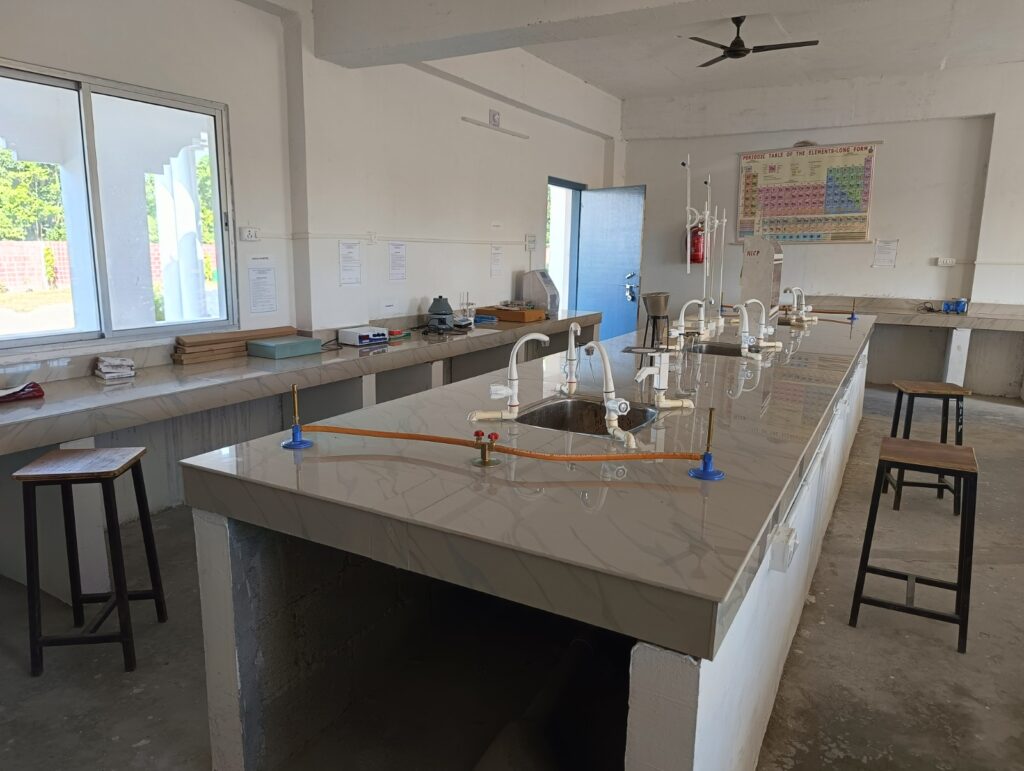
The pharmaceutical chemistry lab in a diploma college is a fundamental component of the curriculum for students pursuing a diploma in pharmacy (D. Pharm). This lab provides students with hands-on experience in understanding the chemical properties of drugs, their synthesis, analysis, and related pharmaceutical chemistry concepts.
Here’s an overview of what a pharmaceutical chemistry lab in a diploma college might include:
Purpose and Objectives:
The primary objective of the pharmaceutical chemistry lab in a diploma college is to complement theoretical learning by offering practical exposure to various aspects of pharmaceutical chemistry. Students gain practical skills and insights into the chemical processes that underlie pharmaceutical formulations and drug behavior.
Key Activities and Experiments:
- 1. Drug Synthesis: Students learn to synthesize simple pharmaceutical compounds using basic organic chemistry techniques. This can include the preparation of derivatives, intermediates, and related substances.
- 2. Chemical Analysis: Students perform chemical tests and experiments to analyze the properties of pharmaceutical compounds. Common tests might include solubility tests, color reactions, and identification tests.
- 3. Simple Spectroscopic Techniques: Students might be introduced to basic spectroscopic techniques such as UV-Vis spectrophotometry or thin-layer chromatography (TLC) to analyze the chemical composition of compounds.
- 4. Drug Assay and Quantitative Analysis: Students learn to perform assays to determine the concentration of active ingredients in pharmaceutical formulations, ensuring accurate dosing.
- 5. pH and Buffer Solutions: Students work with buffer solutions to understand the principles of pH and how they impact drug solubility and stability.
- 6. Preparation and Testing of Solutions: Students prepare solutions of various concentrations and study their properties, reinforcing concepts related to concentrations and dilutions.
Learning Outcomes:
- 1. Practical Application: Students apply theoretical knowledge gained in the classroom to real-world scenarios, gaining a deeper understanding of pharmaceutical chemistry concepts.
- 2. Basic Laboratory Skills: Students develop fundamental laboratory skills, such as using glassware, performing titrations, and following standard operating procedures.
- 3. Hands-On Learning: Lab work enhances students’ comprehension of chemical reactions, properties, and interactions relevant to pharmacy practice.
- 4. Data Interpretation: Students learn to interpret experimental data, helping them grasp the practical implications of chemical principles.
- 5. Safety Awareness: Practical lab experience reinforces the importance of adhering to safety protocols and handling chemicals responsibly.
- 6. Quality Assurance Concepts: Introduction to basic analytical techniques lays the foundation for understanding quality control aspects in pharmaceutical manufacturing.
Guided Exploration:
The pharmaceutical chemistry lab usually focuses on introducing students to foundational concepts, techniques, and skills. The emphasis is on guided exploration, setting the stage for more advanced studies in higher education or practical settings.
Practical Application:
While the experiments might be simpler compared to those in advanced programs, they are designed to instill a practical understanding of pharmaceutical chemistry that is valuable for students’ future careers in pharmacy practice or related fields.
Overall, the pharmaceutical chemistry lab plays an important role in equipping students with the practical skills and knowledge needed to succeed in their journey towards becoming pharmacy professionals.
Pharmacology Lab:
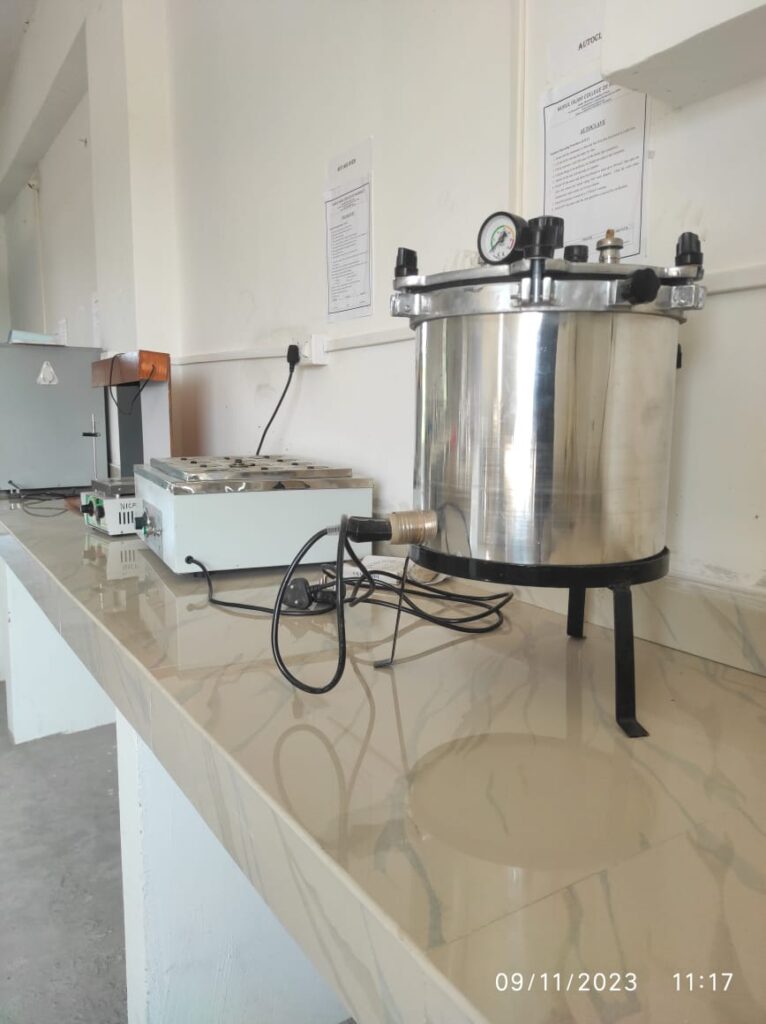
In the pharmacology laboratory, students received hands-on training in the bioassays of various drugs and the practical applications of pharmacology. The pharmacology lab is particularly planned to carry out animal model experiments for anti-hepatotoxic, cardiovascular-related disorders, antipyretic, analgesic, antihistaminic, anti-ulcer, and anti-inflammatory activity testing of known and novel drugs/chemicals.

Here’s an overview of what a pharmacology lab in a diploma college might include:
Purpose and Objectives:
The main objective of establishing the laboratory is to undertake Pharmacological studies on drugs and formulations used in Ayurvedic therapeutics to provide Pharmacological basis to their clinical uses and also to elucidate the safety profile of selected preparations such as herbo-mineral, mineral and metallic preparations. Training and supervision provided to research scholars of M.D. , M. Pharm, M.Sc. (Medicinal plants) and Ph.D. It also offers technical consultancy in the areas related to drug activity and pharmacology of natural products and undertakes sponsored research projects as per norms of the Institute.
Key Activities and Experiments:
This course provides basic knowledge about different classes of drugs available for the pharmacotherapy of common diseases. The indications for use, dosage regimen, routes of administration, pharmacokinetics, pharmacodynamics, and contraindications of the drugs discussed in this course are vital for successful professional practice.
- 1. General blood collection techniques and carrying out various haematological assessments and interpreting the results
- 2. Recording and monitoring the vital physiological parameters in human subjects and the basic interpretations of the results
- 3. Microscopic examinations of the various tissues permanently mounted in glass slides
- 4. Discuss the anatomical and physiological characteristics of various organ systems of the body using models, charts, and other teaching aids
- 5.Study of pharmacological effects of drugs like local anesthetics, mydriatic and mitotic on rabbit eye
- 6. Screening the effects of various drugs acting in the central nervous system
- 7. Study of drug effects on isolated organs / tissues
- 8. Study of pyrogen testing on rabbit
Learning Outcomes:
- 1. Perform the haematological tests in human subjects and interpret the results
- 2. Record, monitor and document the vital physiological parameters of human subjects and interpret the results
- 3. Describe the anatomical features of the important human tissues under the microscopical conditions
- 4. Discuss the significance of various anatomical and physiological characteristics of the human body
- 5. Study and report the local anaesthetic, mydriatic and mitotic effects of the given drug on the rabbit eye
- 6. Choose appropriate animal experiment model to study the effects of the given drugs acting on the central nervous system and submit the report
- 7. Perform the effects of given tissues (simulated) on isolated organs / tissues and interpret the results 8. Interpret the dose dependent responses of drugs in various animal experiment models
Pharmacology lab consists of equipment to investigate the activity of various drug samples, such as Rota Rod, Electro-convulsiometer, Analgesiometer, Histamine chamber and Actophotometer.
Human Anatomy and Physiology of human body is also studied with the help of charts, models including human skeleton and various types of apparatus.
Pharmacology subject imparts knowledge and skills about journey of the drugs starting from its origin to administration, after administration its movement in the body (pharmacokinetics) and its beneficial and hazardous effect on our body (pharmacodynamics).
Pharmacognosy Lab:
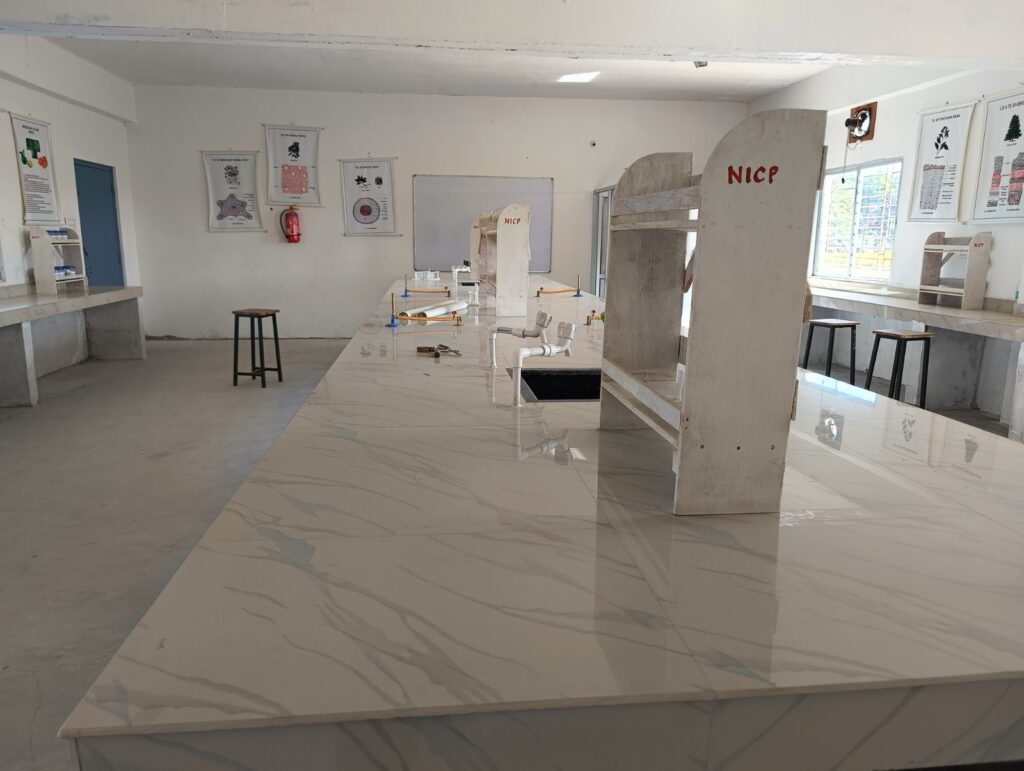
The pharmacognosy lab is an essential component of pharmacy education that focuses on the study of natural products derived from plants, animals, and microorganisms. In this lab, students gain hands-on experience in identifying, analyzing, and understanding the pharmacological properties of these natural sources. Here’s a comprehensive overview of what a pharmacognosy lab typically involves:
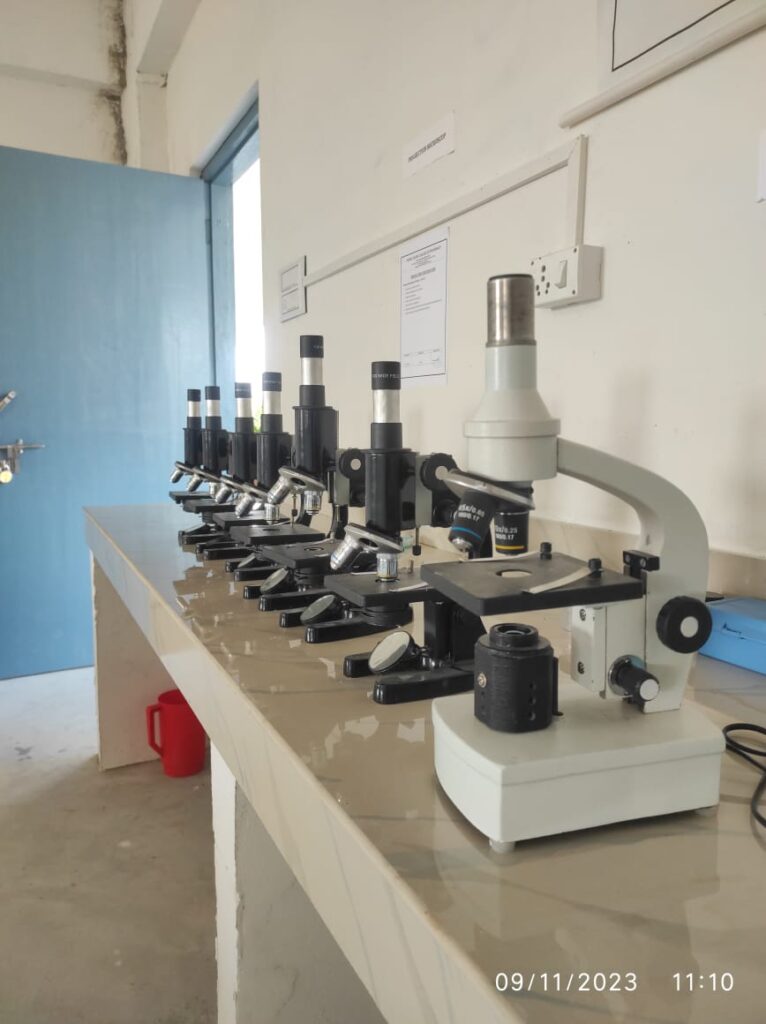
Purpose and Objectives:
The primary objective of the pharmacognosy lab is to familiarize students with the diverse array of natural products used in medicine and their significance in pharmaceuticals. Students learn to identify medicinal plants, study their chemical constituents, and explore their therapeutic potential.
Key Activities and Experiments:
- 1. Plant Collection and Identification: Students learn to identify various medicinal plants, both in their natural habitat and in the lab. This involves recognizing plant morphology, leaves, flowers, and other distinctive features.
- 2. Extraction Techniques: Students are introduced to different methods of extracting bioactive compounds from plant materials, such as maceration, percolation, and soxhlet extraction.
- 3. Microscopy: Students use microscopes to examine plant parts, tissues, and cells. This helps them understand the microscopic structures of plants and their relevance to pharmacognosy.
- 4. Chemical Tests: Students perform chemical tests to identify the presence of various classes of secondary metabolites in plant samples, such as alkaloids, flavonoids, tannins, and more.
- 5. Thin-Layer Chromatography (TLC): Students use TLC to separate and analyze plant extracts, identifying the presence of specific chemical compounds based on their migration distances.
- 6. Bioactivity Screening: Students might conduct preliminary bioactivity tests to assess the potential of plant extracts for various therapeutic activities, such as antimicrobial, antioxidant, or anti-inflammatory properties.
- 7. Herbal Drug Standardization: Students learn about the parameters used to standardize herbal drugs, ensuring consistency in their quality and efficacy.
Learning Outcomes:
- 1. Plant Knowledge: Students gain a comprehensive understanding of medicinal plants, their habitats, and their traditional uses in different cultures.
- 2. Identification Skills: Students develop skills to recognize and differentiate between various plant species based on their morphological characteristics.
- 3. Chemical Analysis: Through chemical tests and chromatographic techniques, students learn to identify and analyze plant constituents.
- 4. Pharmacological Insights: Bioactivity screening provides insights into the potential therapeutic benefits of natural products.
- 5. Microscopic Understanding: Microscopy skills enable students to observe plant structures at a cellular level, aiding in plant identification and assessment.
- 6. Quality Control: Understanding herbal drug standardization ensures that students grasp the importance of maintaining consistent quality in herbal medicines.
- 7. Ethnobotanical Knowledge: Students learn about the cultural and historical uses of plants in traditional medicine, enriching their appreciation for the interconnectedness of nature and healthcare.
Industry and Research Relevance:
The knowledge gained in the pharmacognosy lab is particularly relevant for industries involved in herbal medicines, nutraceuticals, and natural product research. It also forms the foundation for further studies in pharmacognosy and related fields.
Ethical Considerations:
The pharmacognosy lab emphasizes ethical harvesting, sustainable practices, and the responsible use of natural resources to preserve biodiversity and ecosystems.
The pharmacognosy lab plays a vital role in introducing students to the rich world of medicinal plants and natural products, fostering an appreciation for traditional medicine, and equipping them with skills that have applications in pharmaceutical industries, research, and healthcare.
Social Pharmacy Lab:
A social pharmacy lab is a specialized facility within a pharmacy education programs that focuses on the intersection of pharmacy practice, healthcare systems, and societal factors. In this lab, students explore the social, economic, cultural, and ethical aspects of pharmacy practice, with the goal of understanding how these factors influence patient care, medication use, and healthcare policy. Here’s an overview of what a social pharmacy lab might entail:
Purpose and Objectives:
The primary objective of a social pharmacy lab is to provide students with insights into the broader context in which pharmacy practice operates. Students learn how social, economic, and cultural factors impact medication access, adherence, and patient outcomes. The lab aims to sensitize students to the importance of patient-centered care, health disparities, and ethical considerations.
Key Activities and Experiments:
- 1. Health Disparities Analysis: Students study the disparities in healthcare access, medication affordability, and health outcomes among different demographic groups.
- 2. Healthcare Policy Analysis: Students examine healthcare policies, regulations, and their impact on pharmacy practice and patient care.
- 3. Patient Counseling Scenarios: Students engage in role-playing scenarios where they interact with patients from diverse backgrounds, focusing on effective communication and cultural sensitivity.
- 4. Medication Adherence Studies: Students explore factors that influence medication adherence, such as socioeconomic status, health literacy, and patient beliefs.
- 5. Ethical Dilemmas: Students discuss and analyze ethical dilemmas in pharmacy practice, addressing topics such as patient autonomy, informed consent, and resource allocation.
- 6. Pharmacy Marketing and Promotion: Students explore the role of pharmaceutical marketing and its potential impact on patient perceptions and healthcare decisions.
Learning Outcomes:
- 1. Patient-Centered Care: Students gain insights into the importance of tailoring healthcare services to individual patient needs, considering their cultural, social, and economic contexts.
- 2. Health Equity Understanding: Students develop a deeper understanding of healthcare disparities and the need for equitable access to medication and healthcare services.
- 3. Ethical Decision-Making: Through ethical discussions, students enhance their ability to make informed decisions while considering patients’ rights and well-being.
- 4. Communication Skills: Role-playing scenarios help students improve their communication skills, enabling them to effectively interact with patients from diverse backgrounds.
- 5. Policy Awareness: Students become aware of the regulatory and policy frameworks that impact pharmacy practice and patient care.
- 6. Public Health Considerations: The lab introduces students to the broader public health implications of pharmacy practice and medication use.
Community Engagement:
Social pharmacy labs might also involve community outreach activities, such as health awareness campaigns, medication education sessions, and collaborations with local healthcare organizations.
Interdisciplinary Approach:
Social pharmacy is inherently interdisciplinary, and the lab might collaborate with other departments or programs to provide a holistic understanding of the social determinants of health.
Research and Advocacy: Social pharmacy labs might engage in research projects related to patient behaviors, health disparities, and healthcare policy, contributing to the advancement of social pharmacy as a field of study.
The social pharmacy lab underscores the importance of the human and societal dimensions of pharmacy practice. By exploring the social context in which medications are used and healthcare is delivered, students develop a more comprehensive and empathetic approach to their roles as future pharmacy professionals.
Library:

The Institute possesses an extensive library of books and journals. A well-stocked library is an essential component of any establishment. The Pharmacy College Library is a large, brightly lit room that can accommodate over fifty students in comfortable sitting. A well-stocked library with about 750 textbooks and enough national and international publications is available to help students expand their knowledge.
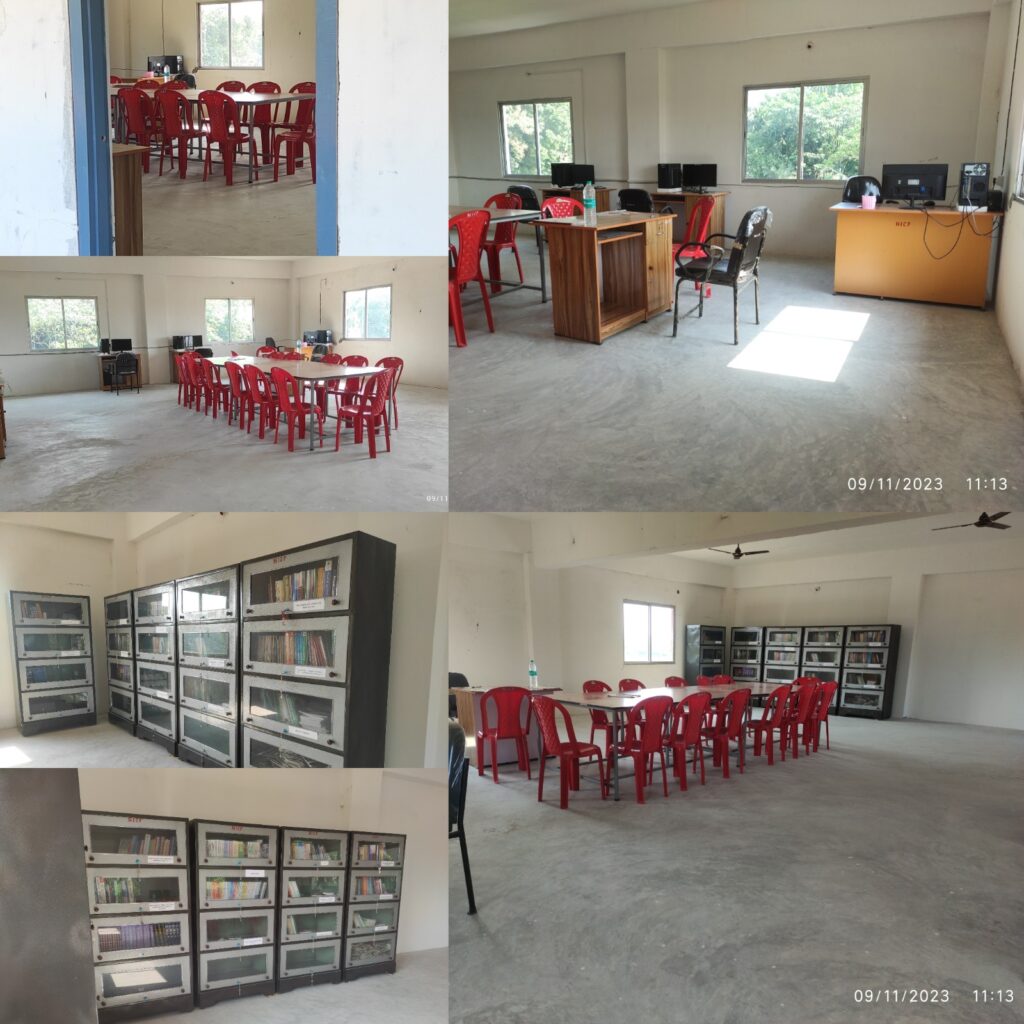
Computers are used in the library. Additionally, pupils have access to the world of information through the Internet’s capability for online searches. Every year, the library would receive an update with the addition of fresh books, journals, and abstracts. Both the teachers and the students will benefit from having up-to-date knowledge of current advancements in the pharmaceutical sciences.
Classroom Facilities
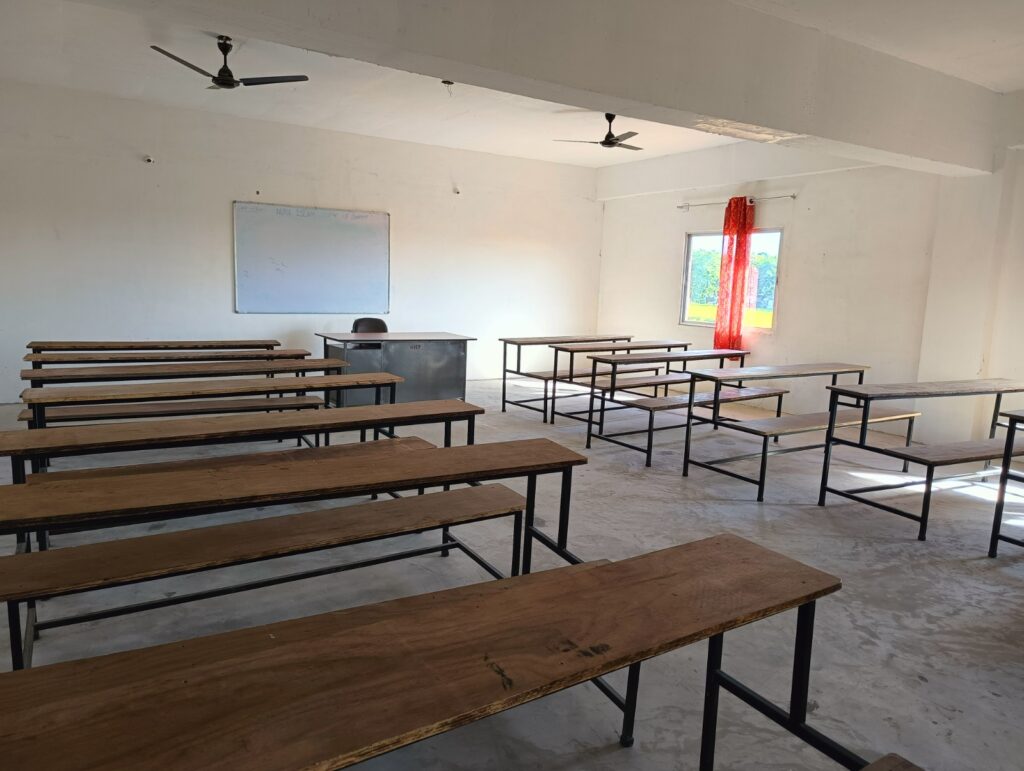
The classrooms have been thoughtfully built to provide ample natural light and ventilation. Teaching strategies are a combination of current teaching techniques and classic blackboard presentations. It gives teachers the freedom to impart knowledge in a distinctive and creative way that engages pupils.
Class room Ethics:-
- Passion for teaching learning and Research
- Respects for students
- Deeper understanding
- Clarity of expression /thought
- Fluency of Language
- Discipline
- Self-esteem
- Sound subject knowledge
Museum:

The museum contains different anatomical models (human heart, eye, ear, kidney etc.), human skeleton, and different educational charts of human body systems.
Medicinal Plant Garden:
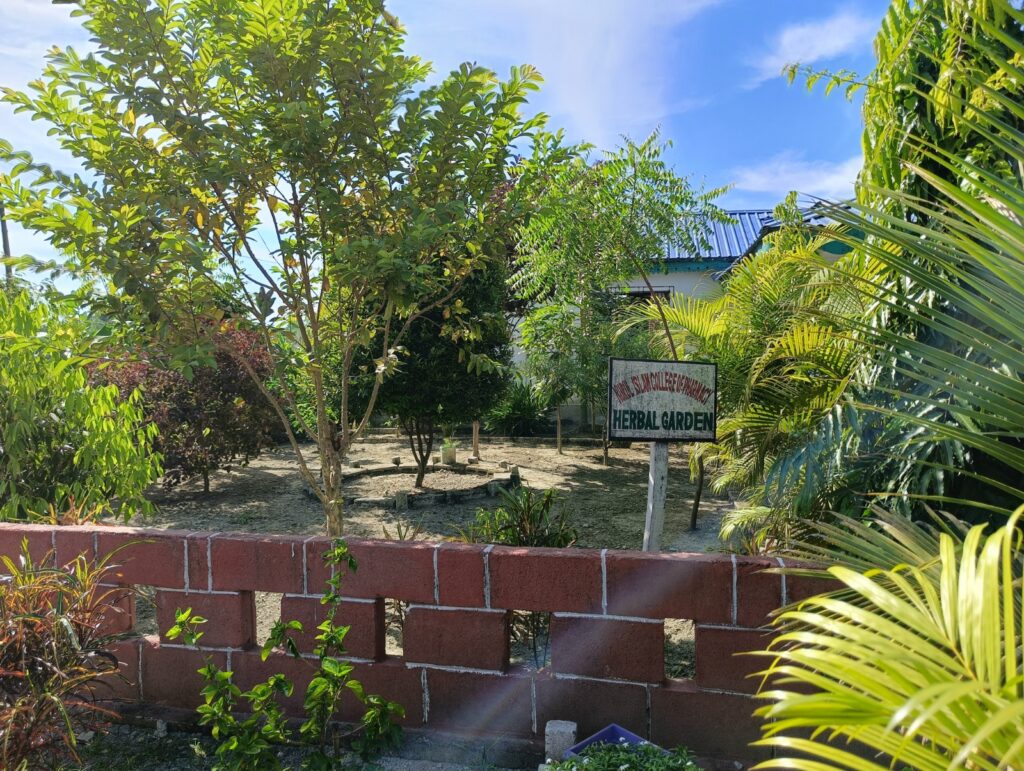
A medicinal plant garden, also known as a medicinal herb garden or botanical garden, is a curated space dedicated to cultivating a diverse collection of plants that have medicinal properties. These gardens serve as educational, research, and conservation resources, providing opportunities for studying the therapeutic uses, cultural significance, and scientific aspects of various medicinal plants.
Here’s an overview of what a medicinal plant garden typically involves:
Purpose and Objectives:
The primary objective of a medicinal plant garden is to provide a living repository of plants with known or potential medicinal properties. These gardens serve multiple purposes, including education, research, conservation, and promoting awareness of traditional and modern herbal medicine.
Key Features and Activities:
- 1. Plant Collection: Medicinal plant gardens feature a wide variety of plant species known for their medicinal attributes. These can include herbs, shrubs, trees, and sometimes even rare or endangered species.
- 2. Herb Identification: Each plant is usually labeled with its common name, scientific name, family, and information about its medicinal uses. This helps visitors learn about different plants and their applications.
- 3. Traditional and Modern Uses: Gardens often provide information about the historical use of plants in traditional medicine systems, as well as their current applications in modern herbal medicine.
- 4. Educational Programs: Medicinal plant gardens often offer guided tours, workshops, and seminars to educate the public, students, and healthcare professionals about the importance of medicinal plants.
- 5. Research: Gardens can serve as valuable resources for researchers studying the chemistry, pharmacology, and therapeutic potential of various plant species.
- 6. Cultural and Ethnobotanical Significance: Some gardens emphasize the cultural and ethnobotanical aspects of medicinal plants, showcasing their importance in different societies and indigenous traditions.
- 7. Conservation: Medicinal plant gardens can contribute to the conservation of plant species that are threatened or endangered due to overharvesting or habitat loss.
- 8. Aesthetic Appeal: In addition to their educational and research value, these gardens often offer aesthetic beauty, creating serene and peaceful environments.
Learning Outcomes:
- 1. Botanical Knowledge: Visitors, students, and researchers gain insights into the diversity of medicinal plants, their appearances, and growth habits.
- 2. Medicinal Properties: Information provided about each plant’s medicinal uses helps visitors understand their potential health benefits.
- 3. Cultural Awareness: Gardens highlight the cultural and historical significance of medicinal plants, fostering cross-cultural understanding.
- 4. Appreciation for Nature: Visitors develop an appreciation for the natural world and the role of plants in healthcare and well-being.
- 5. Conservation Awareness: Gardens raise awareness about the importance of conserving plant species and their habitats.
- 6. Research Opportunities: Researchers have access to a living collection of plants for scientific studies on pharmacology, chemistry, and more.
Overall, medicinal plant gardens play a vital role in preserving knowledge about traditional herbal medicine, promoting research, and fostering a deeper connection between humans and the natural world.
Sports Facilities
College has sufficient area for the sports activities. The grounds for Cricket, Volleyball, and Football are properly maintained throughout the year.
Also, We host an Annual Sports event to further the sports expect and nurture a healthy competition feeling among the students.
Conveyance
The Institute is located in an easy to reach location and public transport is almost available round the clock to reach the college.
Address:
NURUL ISLAM COLLEGE OF PHARMACY
Vill: Changmaritari, P.O. Khagenhat, P.S.-Falakata
District: Alipurduar (West Bengal)
Pin Code: 735204
Mobile: +91 9382 252 5116, +91 8101 058 2233
Email: nicop0055@gmail.com
…
Nurul Islam College Of Pharmacy at a Glance
Mission Statement
To propagate knowledge and serve the cause of quality education(technical & professional), research training and social welfare according to best emerging trends in these spheres based on the principles of excellence, self-reliance,collaboration and service to society.
Our Core Values
We have a culture that is modern, relevant, and inspires students to have a brighter future. We are determined in our approach to learning, are creative in our thinking, and bold in our ambitions.
Our Philosophy
While transforming the today Students in tomorrow’s Professionals ready for real world tests as well also a better person, we aim to meet certain objectives:
- Develop quality education and skill in engineering and technology including appropriate attitudes, behaviors and non-technical competencies
- Strengthen technical manpower base of the nation by offering continuing vocational education facilities for working professionals.
- Develop research facilities at diploma levels undertaking live industrial projects.
- Reduce unemployment amongst the educated youth by equipping them for suitable industrial employment and entrepreneurship
- Promote entrepreneurship in young technical professionals who will be job creaters rather than job seekers.
